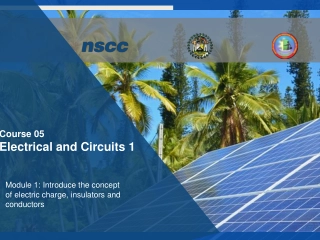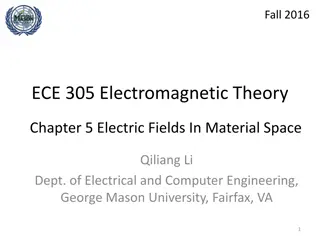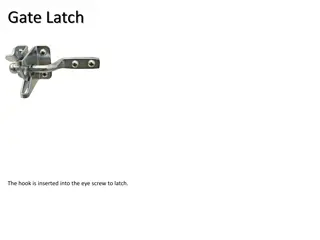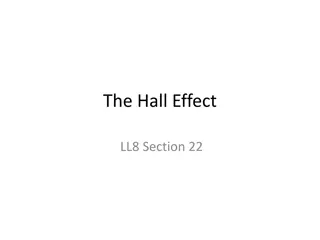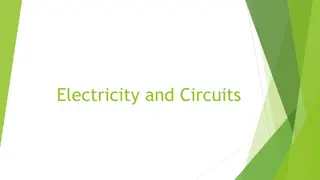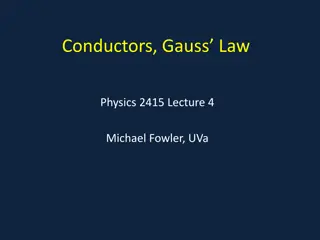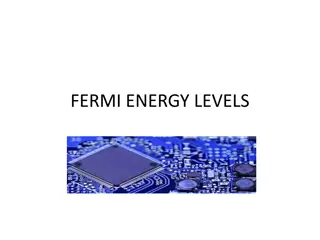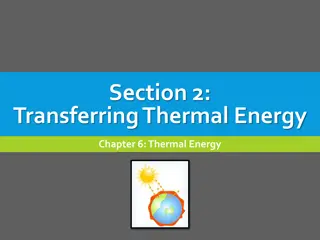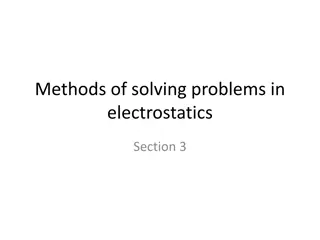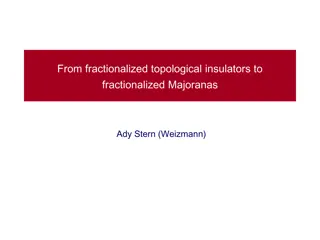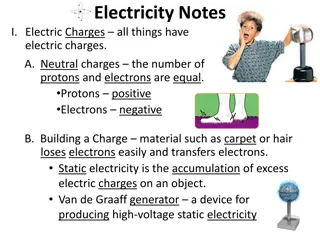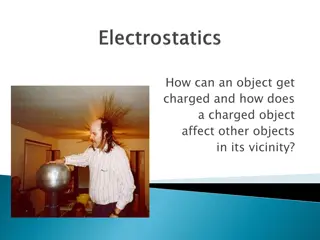Properties of Conductors and Insulators
Conductors like copper, aluminum, and iron allow electric charge motion, while insulators such as glass and rubber do not. Learn about electric fields, charges, and more in this detailed explanation.
Download Presentation

Please find below an Image/Link to download the presentation.
The content on the website is provided AS IS for your information and personal use only. It may not be sold, licensed, or shared on other websites without obtaining consent from the author.If you encounter any issues during the download, it is possible that the publisher has removed the file from their server.
You are allowed to download the files provided on this website for personal or commercial use, subject to the condition that they are used lawfully. All files are the property of their respective owners.
The content on the website is provided AS IS for your information and personal use only. It may not be sold, licensed, or shared on other websites without obtaining consent from the author.
E N D
Presentation Transcript
Conductors and Insulators A conductor is a material that permits the motion of electric charge through its volume. Examples of conductors are copper, aluminum and iron. An electric charge placed on the end of a conductor will spread out over the entire conductor until an equilibrium distribution is established. An insulator does not permit the motion of electric charge, an electric charge placed on an insulator stays in place. Examples of insulators (like glass, rubber and Mylar) The properties of a conductor are a result of the presence of free electrons in the material. Because of the free electrons, the charge distribution of a conductor can be changed by the presence of external charges. For example, the metal sphere shown in figure is initially uncharged. The free electrons and positive ions are distributed uniformly over its surface. If a rod with a positive charge is placed in the vicinity of the sphere, it will produce an attractive force on the free electrons. The free electrons will be redistributed, and the top of the conductor will get a negative charge. Since the number of free electrons on the sphere is unchanged, the bottom of the sphere will have a deficit of free electrons (and will have a positive charge).
If we connect the bottom of the sphere to ground, the number of electrons on the sphere will increase, and the sphere will have a net negative charge If we break the connection to the ground before removing the charged rod, we are left with a negative charge on the sphere. If we first remove the charged rod, the excess of electrons will drain to the ground, and the sphere will become uncharged. ELECTRIC FIELD The presence of an electric charge produces a force on all other charges present. Suppose two charges, q1and q2, are initially at rest. Coulomb's law allows us to calculate the force exerted by charge q2on charge q1. At a certain moment charge q2is moved closer to charge q1. The charges exert a force on one another by means of disturbances that they generate in the space surrounding them. These disturbances are called electric fields. Each electrically charged object generates an electric field which penetrates the space around it, and exerts pushes or pulls whenever it comes in contact with other charged objects.
To calculate the electric field E, it is often convenient to make use of a fictitious charge called a test charge qo. The test charge is defined to exert no force on other charges. The test charge will feel an electric force F. The electric field at the location of the point charge is defined as the force F divided by the charge qo: The definition of the electric field shows that the electric field is a vector field has a magnitude and a direction. Electric field units are force per charge, so units are N/C. The electric field is a vector quantity, since force is a vector quantity. The field approach may be summarized as follows: 1. Charge Q sets up an electric field in space around it. 2. The resulting field exerts a force on q0which depends only on the position and magnitude of qo.
Graphical Representation of the Electric Field: Electric field lines (also known as lines of force) are constructed with the following rules: 1. The tangent to the field line at any point gives the direction of the electric field there. 2. Lines of force are drawn to that the "number of lines/unit area is proportional to the magnitude of the electric field. If close together, the field is strong there, weaker where further apart. The following observations can be made about field lines: 1. The direction of the electric field at a point is the same as the direction of the force experienced by a positive test charge placed at that point. 2. Electric field lines can be used to sketch electric field. 3. Field lines come out of positive charges (because a positive charge repels a positive test charge). 4. Field lines come into negative charges (because they attract the positive test charge). 5. Field lines originate on positive charges and terminate on negative charges, without crossing between each other. 6. The density of field lines in any region is proportional to the strength of the electric field in that region. 7. x is called the neutral point, that is the electric field is zero.
Example 1: 1. What are the relative magnitudes of the charges? 2. What are the signs of the charges? |??| |??|= 32 1- 8= 4 2- a is positive charge, b is negative charge. The electric field: (E, [E] = (N/C)) at a point P in the space is defined as the electric force F that acts on a small positive test charge, qo , placed at that point divided by the magnitude of the test charge, i.e. Where riis a vector directed from the charge, qi , to the point in question.
For a continuous charge distribution, the electric field is given by and dq could be calculated using the charge density as follows: The Uniform Electric Field An important field for our consideration is the uniform electric field, a field that has the same magnitude and direction at all points. An infinite sheet of charge will be used to create the uniform E. This may be realized to a good approximation in the lab by hooking a battery to two isolated parallel metal plates so that they become oppositely charged. An electron injected into the region between the plates will experience a force given by: F = -e E. The resulting acceleration can be found from Newton's second law. In the region between the plates, the electron will experience a constant acceleration and the resulting parabolic trajectory.
The control of electrons by so-called deflection plates is the principle behind the operation of the cathode-ray tube used in oscilloscopes and many televisions and computer monitors. Motion of charged particle in a uniform electric field: A charged particle of mass m and charge q moving in an electric field E has acceleration: a = ? ?? If the electric field is uniform, the acceleration is constant. Example 2: A proton enters a region of a uniform electric field E = 80 i ? ?with an initial velocity of vi= 2 x 104j ?/? . What is the speed of the proton 2.0 x10-6s after entering this region?
Example 3: A tiny, 0.6-g ball carries a charge of magnitude 8.0 x10-6C. It is suspended by a light thread in a downward electric field of intensity 300 N/C. What is the tension in the thread if the charge on the ball is (a) positive (b) negative? Answer: (a) Positive charge: (b) Negative charge


